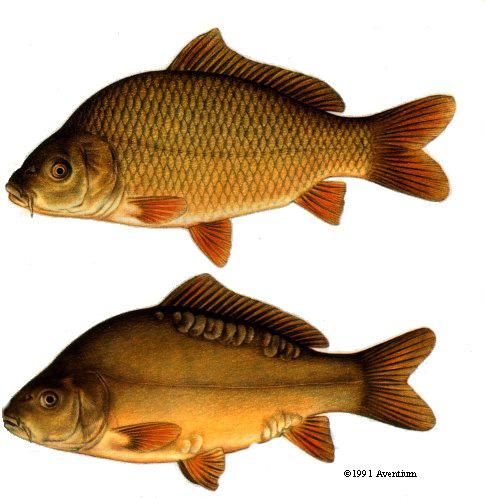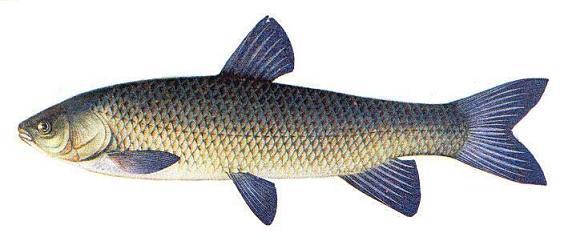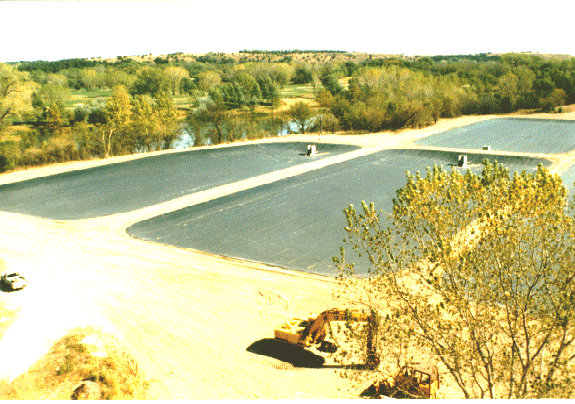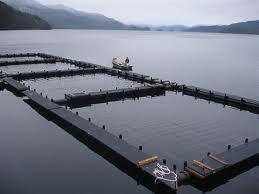
- •Р.А. Юсупова
- •От автора
- •Unit 1 aquaculture Active vocabulary
- •1 Aquaculture
- •1.1 Read the following international words and translate them. (Mind the part of speech).
- •1.2 Give Russian equivalents of the following words and word combinations.
- •1.3 Read and translate the text with the help of a dictionary.
- •1.4 Answer the questions
- •1.6 Translate the given Russian words into the English ones:
- •1.7 Match the words with their definitions.
- •1.8 Read the text without a dictionary. Aquaculture’s beginnings
- •2 Ancient and modern aquaculture
- •2.1 Read the following international words and translate them. (Mind the part of speech).
- •2.2 Give Russian equivalents of the following words and word combinations.
- •2.3 Read and translate the text with the help of a dictionary.
- •2.4 Give English equivalents:
- •Vocabulary
- •4.5 Give English equivalents:
- •4.6 Translate the given Russian words into the English ones:
- •4.7 Match the words with their definitions.
- •4.8 Topics for discussion
- •Feeding the world through agriculture
- •5 Control over reared species
- •5.1 Read the following international words and translate them. (Mind the part of speech).
- •5.2 Give Russian equivalents of the following words and word combinations.
- •5.3 Read and translate the text with the help of a dictionary.
- •5.4 Give English equivalents:
- •5.9 Answer the questions
- •Unit 2 fish culture Active vocabulary
- •6 The big two in fish culture
- •Choose the equivalents:
- •Aquaculture species in the united states
- •1 Rainbow, brown
- •7.4 Give English equivalents:
- •4Bullhead
- •7.13 Render the following verbs with ing-forms into infinitives and translate them:
- •8 Culture systems
- •8.1 Read the following international words and translate them.
- •8.2 Give Russian equivalents of the following words and word combinations.
- •8.3 Read and translate the text with the help of a dictionary.
- •8.4 Give English equivalents:
- •8.5 Match the words with their definitions.
- •8.6 Fill in the gaps using the words given below:
- •8.7 Answer the questions
- •8.8 Read the text without a dictionary. Types of aquaculture opeations
- •Vocabulary
- •8.9 Match the words with their definitions.
- •8.10 Answer the questions
- •Vocabulary
- •Vocabulary
- •10.5 Translate the given Russian words into the English ones:
- •Vocabulary
- •Vocabulary
- •Vocabulary
- •Vocabulary
- •12.5 Answer the questions
- •13 Potential adverse effects
- •13.1 Read and translate the text with the help of a dictionary.
- •Vocabulary
- •13.2 Answer the questions
- •14 Carp Aquaculture
- •Carp as ornamental fish
- •15 Tilapia Fish farming
- •Nutrition
- •Exotic species
- •Uses other than supplying food
- •In aquaria
- •16 Trout Anatomy
- •Habitat
- •As food
- •River fishing
- •17 Salmon Life cycle
- •Species
- •Atlantic Ocean species
- •Pacific Ocean species
- •Salmon fisheries
- •Salmon aquaculture
- •18 Shrimp Farming
- •Marketing
- •Life cycle
- •19 Grass carp
- •Ecology
- •Invasive species
- •Use as weed control
- •Fishing for grass carp
- •Triploid Grass Carp
- •20 Channel catfish
- •21 Pond
- •Technical definitions
- •Formation
- •Characteristics
- •22 Cage
- •Site Criteria
- •Pond Problems
- •Water Quality
- •Temperature
- •Turbidity
- •23 Raceway
- •Site selection
- •Water flow
- •Maximum load
- •Waste water
- •Appendix
- •Proverbs
- •Библиографический список
4Bullhead
Bullhead is a popular recreational and food fish in the Great Lakes basin. Experimental work indicates that black bullhead survives and grows well in ponds or cages. They do best in turbid waters.
5Carp
C arp,
an important
finfish in the world, has minimal but growing demand in the United
States. Technology to culture carp in ponds is well known and the
fish is suited to conditions throughout the United States. The
principal obstacle is poor consumer acceptance. Carp could provide a
dependable supply of fish for use in value-added products such as
surimi and fish sausage.
arp,
an important
finfish in the world, has minimal but growing demand in the United
States. Technology to culture carp in ponds is well known and the
fish is suited to conditions throughout the United States. The
principal obstacle is poor consumer acceptance. Carp could provide a
dependable supply of fish for use in value-added products such as
surimi and fish sausage.
Grass carp or White amur
W hite
amur
is
occasionally stocked in ponds to control
aquatic
vegetation. The sterile triploid is most commonly
used.
The fish survives well and grows rapidly.
hite
amur
is
occasionally stocked in ponds to control
aquatic
vegetation. The sterile triploid is most commonly
used.
The fish survives well and grows rapidly.
7.13 Render the following verbs with ing-forms into infinitives and translate them:
Model: growing – to grow
Considering, existing, farming, recirculating, flushing, stocking, leading.
7.14 Translate the given Russian words into the English ones:
1. Tilapia are (тропический) fish.
2. Golden shines are cultured in (пруды).
3. Golden shiners require (два) growing seasons to reproduce.
3. Eggs of white suckers are (полосатые).
5. Bullhead are popular (платная рыбалка и пища) fish.
6. Carp is an important (рыбный объект) in the world.
7. White amur survives well and (расти) rapidly.
7.15 Answer the question
Why are the following aquatic species less popular in the United States?
UNIT 3
CULTURE SYSTEMS
Active vocabulary
|
compacted |
плотный, массивный, сжатый |
|
slope |
уклон |
|
ration |
соотношение, пропорция |
|
shallow |
плоский |
|
management |
управление, умение справиться с чем-либо |
|
to exceed |
превышать |
|
drain |
дренаж, осушать |
|
inflow |
втекающий, впадающий |
|
to be in stock |
иметь в наличии |
|
linear |
узкий и длинный, подобный линии |
|
raceway |
лоток, рыбоходный канал |
|
to expose |
подвергать, зд. Оставлять |
|
cage |
садок, изолятор |
|
net-pen |
садок, огороженное место сетями для выращивания объектов марикультуры |
|
hatchery |
инкубаторная станция |
8 Culture systems
8.1 Read the following international words and translate them.
Culture, system, typical, ration, erosion, yards, acre, static, minimum, industry, production, period, minutes, structures, natural, meters, practiced, limited, farmers, operations, commercially, storms.
8.2 Give Russian equivalents of the following words and word combinations.
Side slopes, steeper slopes, to remove water completely, to maintain higher densities, a leaner channel, a circular tank, to have a drain, freshwater environment, marine environment, to withstand storms.
8.3 Read and translate the text with the help of a dictionary.
Ponds.
The primary
culture system used in the world today is the earthen pond. A typical
pond is about 3 feet (1 m) deep at the upper end and 6 feet (2 m)
deep at the drain. The bottom and sides are made from compacted earth
sides slope at a ration of 2:1 or 3:1. Steeper slopes make entry and
exit from the pond difficult and promote erosion of the banks, while
shallower slopes promote the establishment of aquatic weeds. Pond
size varies greatly – some are only a few square y ards
in area, but most are an acre (0,4 ha) or larger. Management and
harvesting become difficult if a pond too large, so most culture
ponds do not exceed about 20 acres (8 ha).
ards
in area, but most are an acre (0,4 ha) or larger. Management and
harvesting become difficult if a pond too large, so most culture
ponds do not exceed about 20 acres (8 ha).
A well designed pond should have a drain that allows the water to be completely removed within a day or two and should be provided with an inflow pipe of sufficient size that the pond can be filled within a reasonable period of time. Ponds can be stocked at various densities. If water is exchanged continuously or frequently, higher densities of culture animals can be maintained than when static conditions are employed. Catfish farmers in Mississippi are annually producing over 4,000 ponds per acre in ponds
Raceways.
R
Raceways at a West Virginia
fish
hatchery
Cages and Net-Pens.
C ulture
cages and net-pens are structures placed in a natural environment and
stocked with fish for grow out. The only real difference between the
two is size. Cages tend to be relatively small (a typical cage has a
volume of 1 or 2 m²) while net-pens are often several meters on a
side and 10 to20 meters deep. Cage culture has been practiced to a
limited extent by catfish farmers. For example, in Arkansas (where
leasing of state lakes for cage culture operations is possible),
catfish have been commercially produced in cages. Cages have been
used by researchers. Most cage culture is conducted in freshwater
environment, while net-pens are most commonly used in the marine
environment. Net-pen culture has been restricted to protected waters,
but recently, net-pen engineering has advanced to the stage that open
sea pens are now available that can withstand storms without damage.
ulture
cages and net-pens are structures placed in a natural environment and
stocked with fish for grow out. The only real difference between the
two is size. Cages tend to be relatively small (a typical cage has a
volume of 1 or 2 m²) while net-pens are often several meters on a
side and 10 to20 meters deep. Cage culture has been practiced to a
limited extent by catfish farmers. For example, in Arkansas (where
leasing of state lakes for cage culture operations is possible),
catfish have been commercially produced in cages. Cages have been
used by researchers. Most cage culture is conducted in freshwater
environment, while net-pens are most commonly used in the marine
environment. Net-pen culture has been restricted to protected waters,
but recently, net-pen engineering has advanced to the stage that open
sea pens are now available that can withstand storms without damage.
